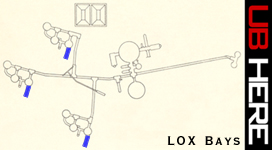LOX
Bays
|
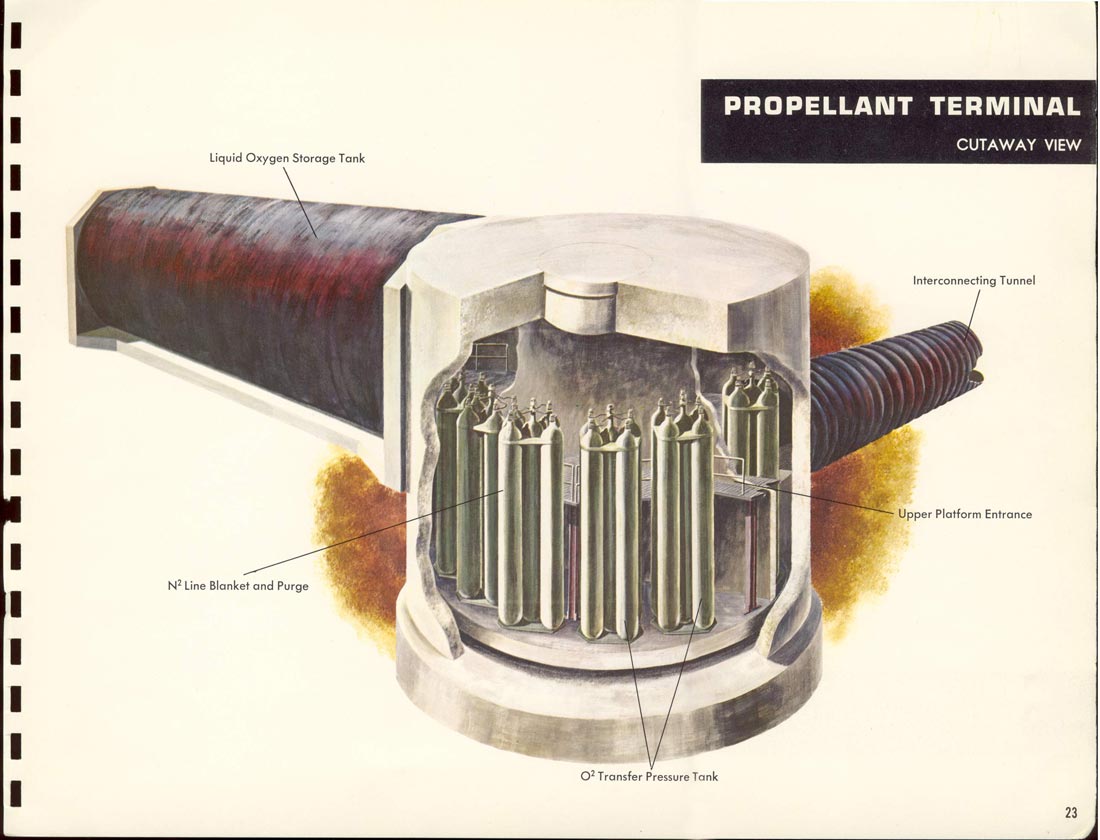
Martin
Company color illustration showing the propellant terminal with
adjoining LOX bay at upper left.
Image
courtesy of Fred Epler
|
At
each of the three propellant terminals at a Titan I complex, there was an
adjacent LOX bay which housed a very large, stainless steel,
double-walled liquid oxygen storage tank. Access to the LOX bay was from
the upper level of the propellant terminal by a distinctive doorway
with chamfered corners.
|
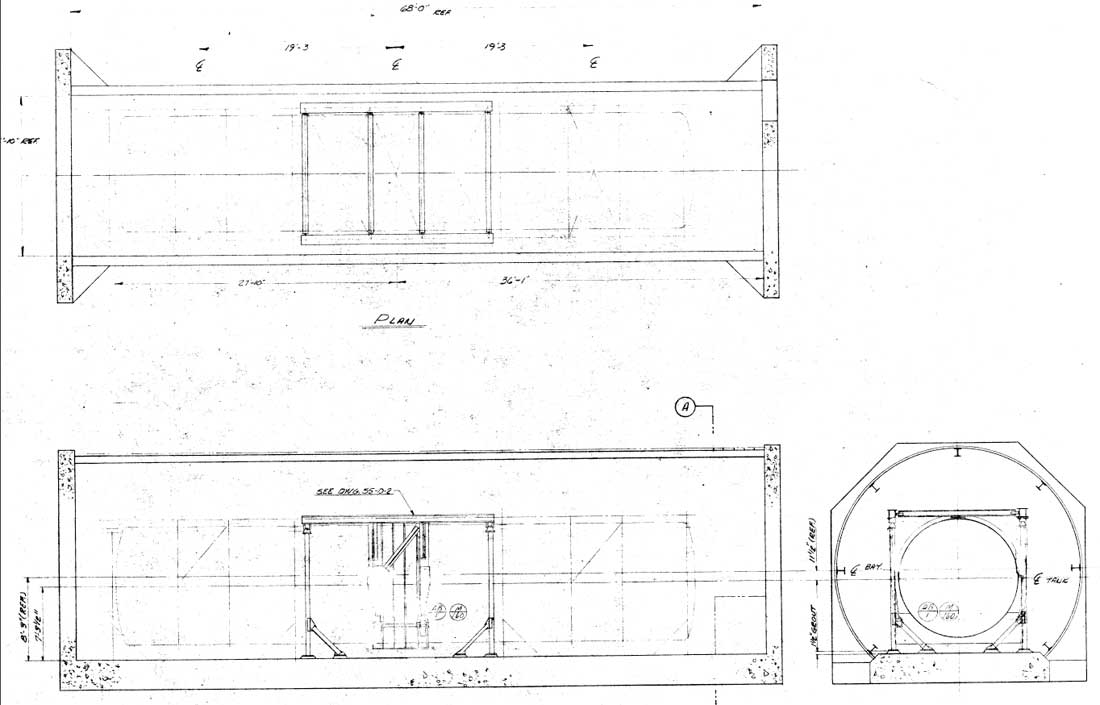
Top:
overhead view; bottom left: side view; bottom right: end-on view
|
|

Diagram
of the LOX tank specification used at the Lowry Titan I sites.
|
|
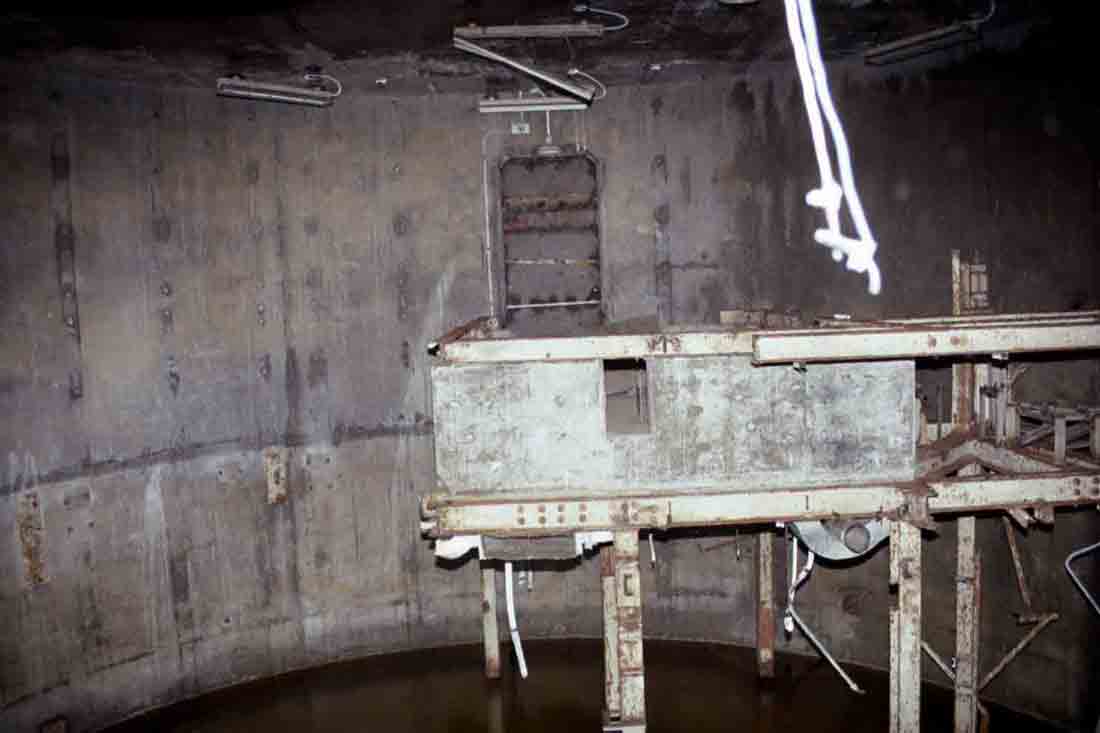
Entrance
to the LOX bay (at upper middle) viewed from the scrapped out propellant
terminal #1 at 724-C. The doorway has been closed off with welded
plate steel-- probably deck plating salvaged from the personnel tunnels.
|
The
LOX bay itself was a tunnel-like structure 68' long and 24' in
diameter and comprised of 5 semi-circular, corrugated steel sections
roughly 15 feet wide, bolted and welded together with 1'6"
concrete walls on both ends and a concrete pad for a floor.
The
LOX tanks were 60'6" long and 11'6" in diameter and held 28,000 gallons each of liquid oxygen in a super-cooled
cryogenic state for use as oxidizer for the Titans' rocket motors.
Each tank was supported by a rather intricate array of steel beams
forming a crib-like structure around it that would allow the tank
reasonable leeway to move with any ground shocks that might be
transmitted to the enclosing bay.
|
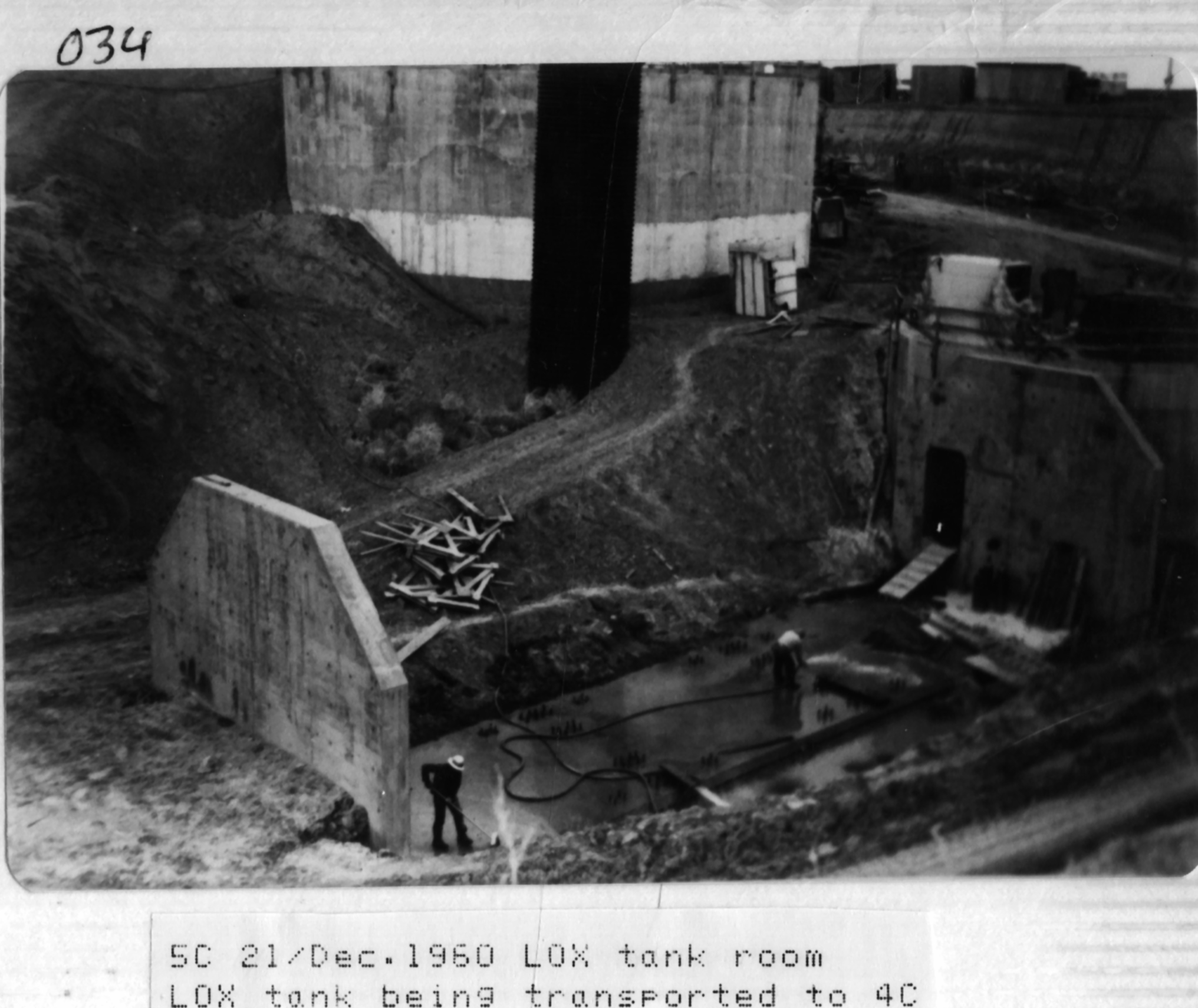
LOX
Bay under construction
Photo
courtesy of Fred Epler
|
The
LOX tanks were most likely constructed offsite from Buckley Air
National Guard Base and arrived by rail where they were hoisted into a
special rig and then lowered onto wheel trucks for transport to the
construction sites.
|
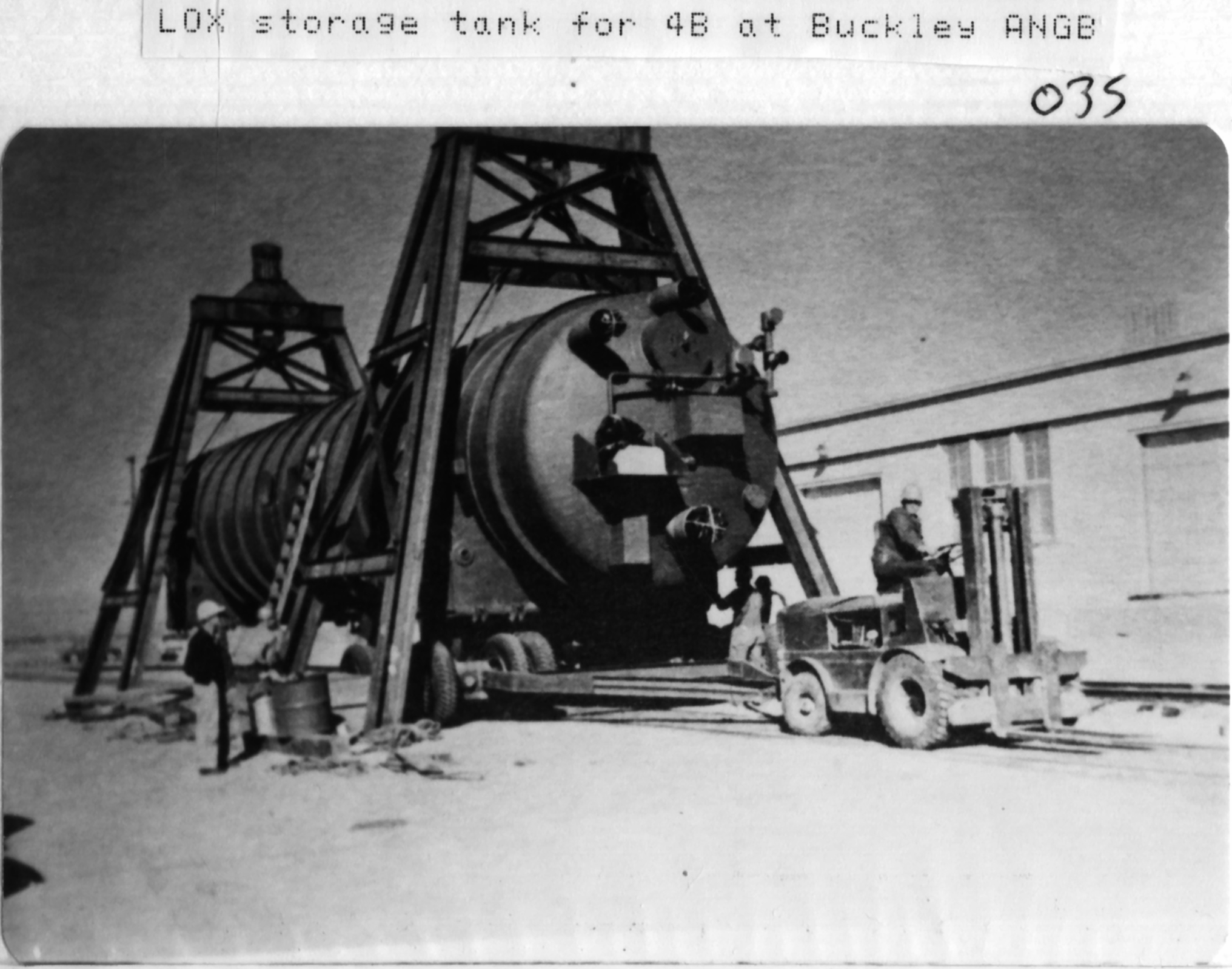
LOX
tank at Buckley Air National Guard Base being lowered from a rig onto independent
wheel "trucks" for transport to the construction
site at 724-B.
Photo
courtesy of Fred Epler
|
|
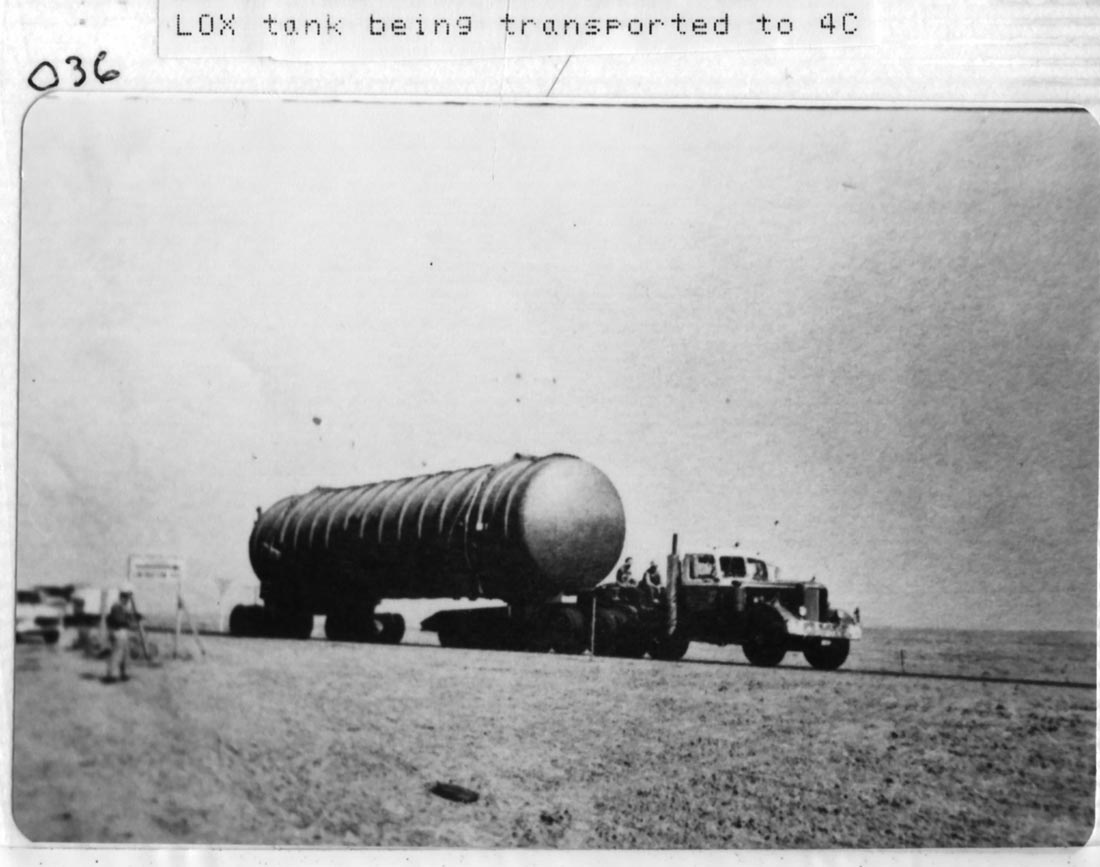
LOX
tank being moved onto the construction site at 724-C for installation.
Photo
courtesy of Fred Epler
|
|
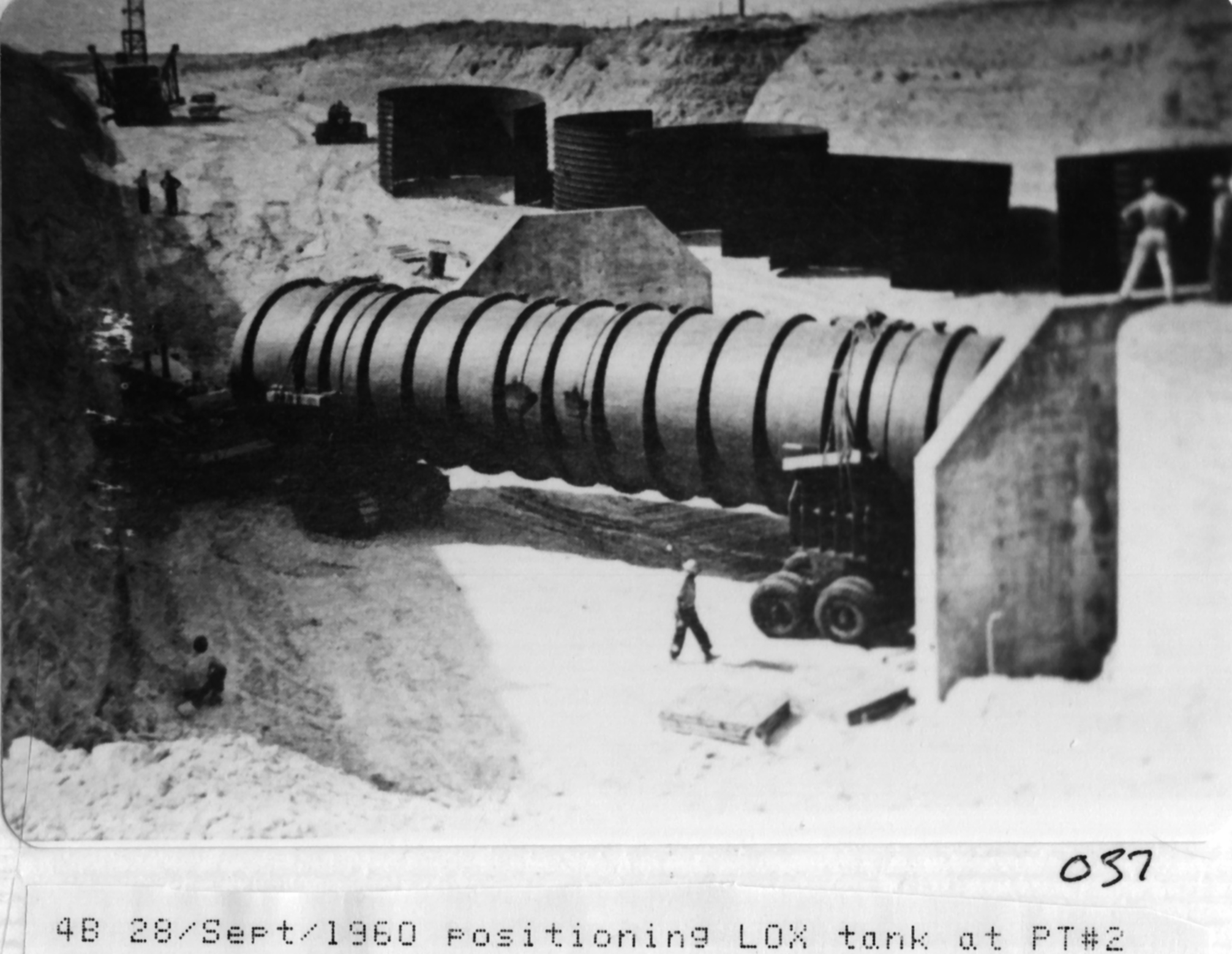
Tank
being nudged into place at 724-B. The corrugated sections that
will cover the bay can be seen in the background awaiting installation.
Photo
courtesy of Fred Epler
|
|
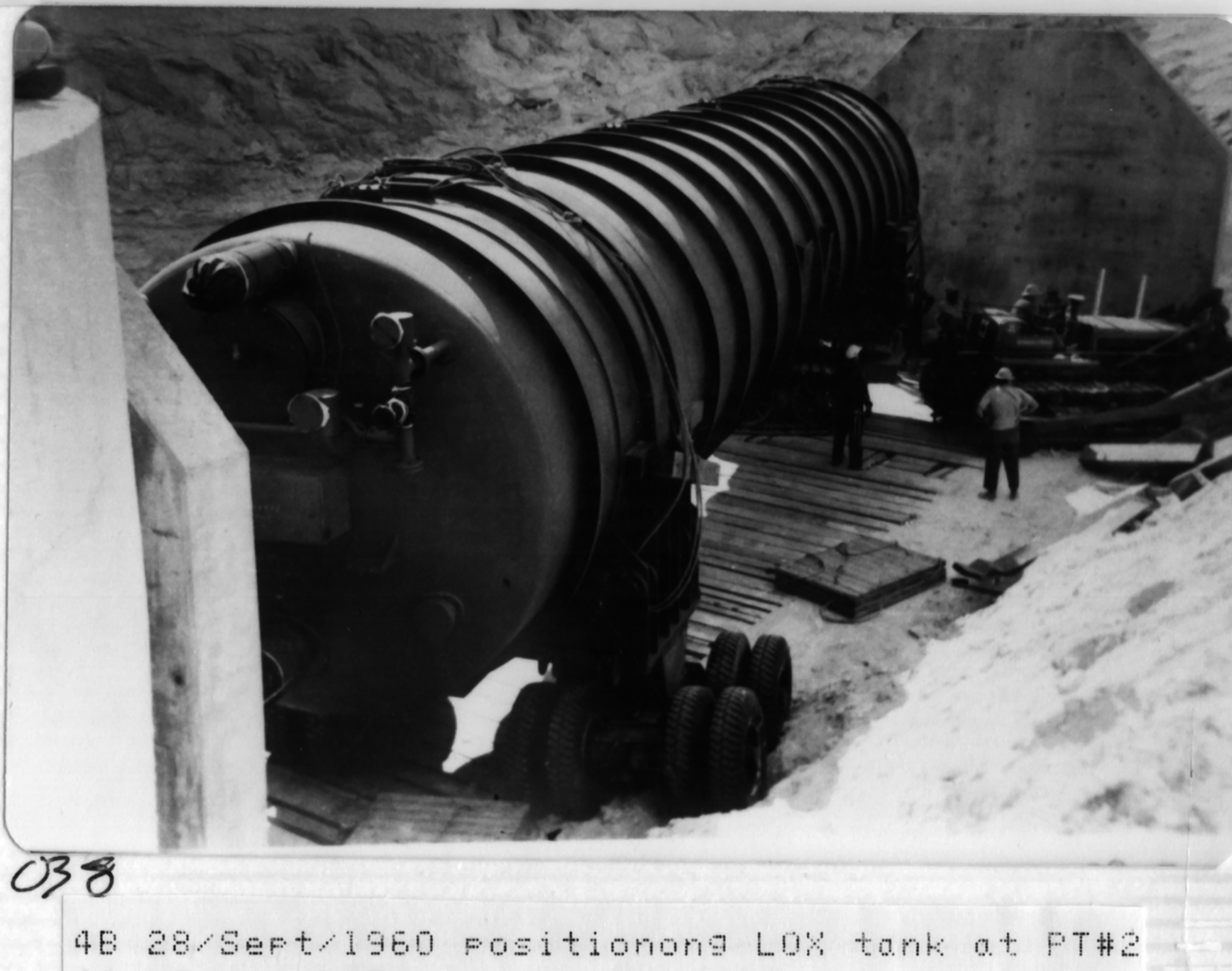
Final
positioning of LOX tank. Note the bulldozer being used to move and
adjust it to its final position for the addition of its supporting steel
structure.
Photo
courtesy of Fred Epler
|
|
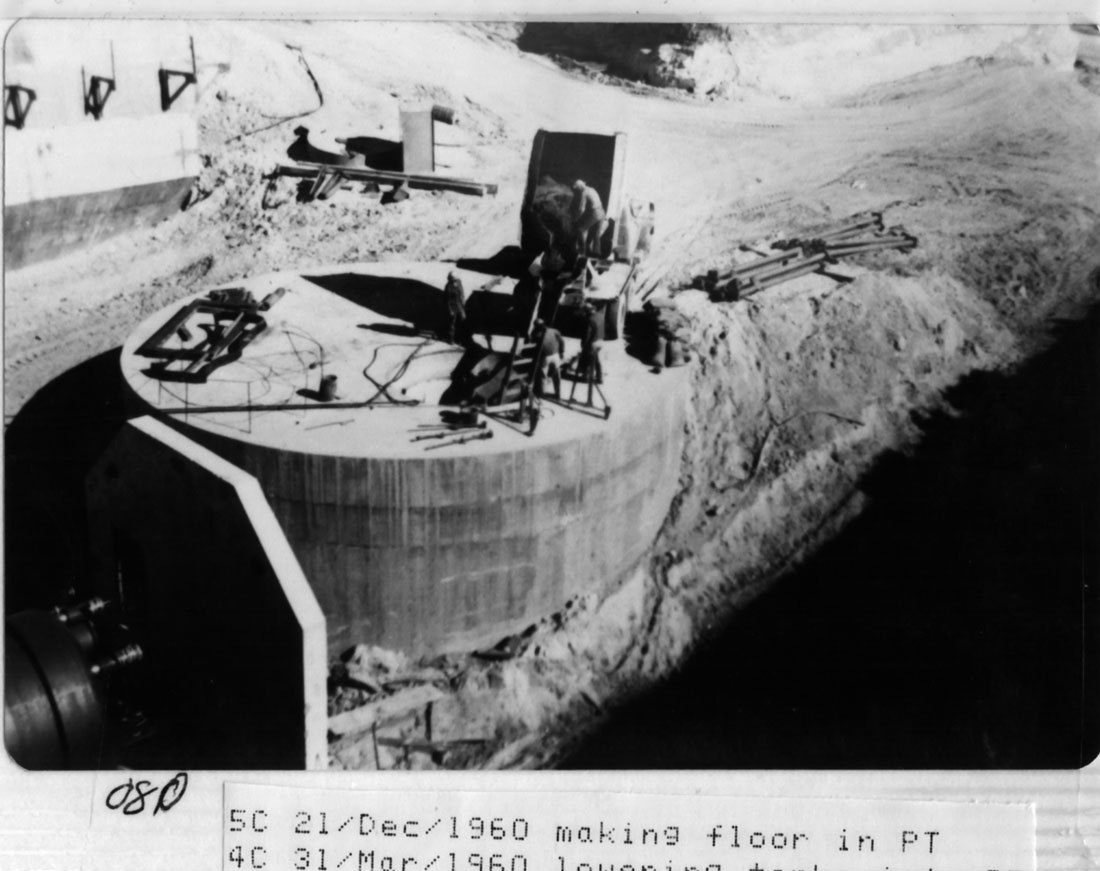
Though
this photo mostly shows the propellant terminal structure, the emplaced
LOX tank with its shiny new connections can be seen at the lower left of
the image.
Photo
courtesy of Fred Epler
|
Once
on site, the storage were wrestled into position into the
partially-constructed LOX bay with heavy equipment. Next the
supporting steel structure was assembled around the tanks before the
corrugated steel liners were lowered over the tank and secured in
place. Once backfilled, the floor of the LOX bays were
approximately 25' below the surface.
From
a strategic standpoint (and that of a layman) this shallow depth seems
like a point of weakness in the case of an enemy first-strike as a
near miss on a Titan I complex would certainly have put extreme
stresses on the LOX bays, putting the invaluable oxidizer, required
for a retaliatory strike, at great risk from a failed tank, line or
connection.
It
is likely however, that the tanks would have fared pretty well in all
but the most catastrophic and close strike owing to the protective
nature of the soil surrounding it (although shallow). Even with
the enormous energies released by a nuclear explosion, digging up
buried structures takes incredible power. Ground shocks would be
more likely to cause damage than an explosion.
|
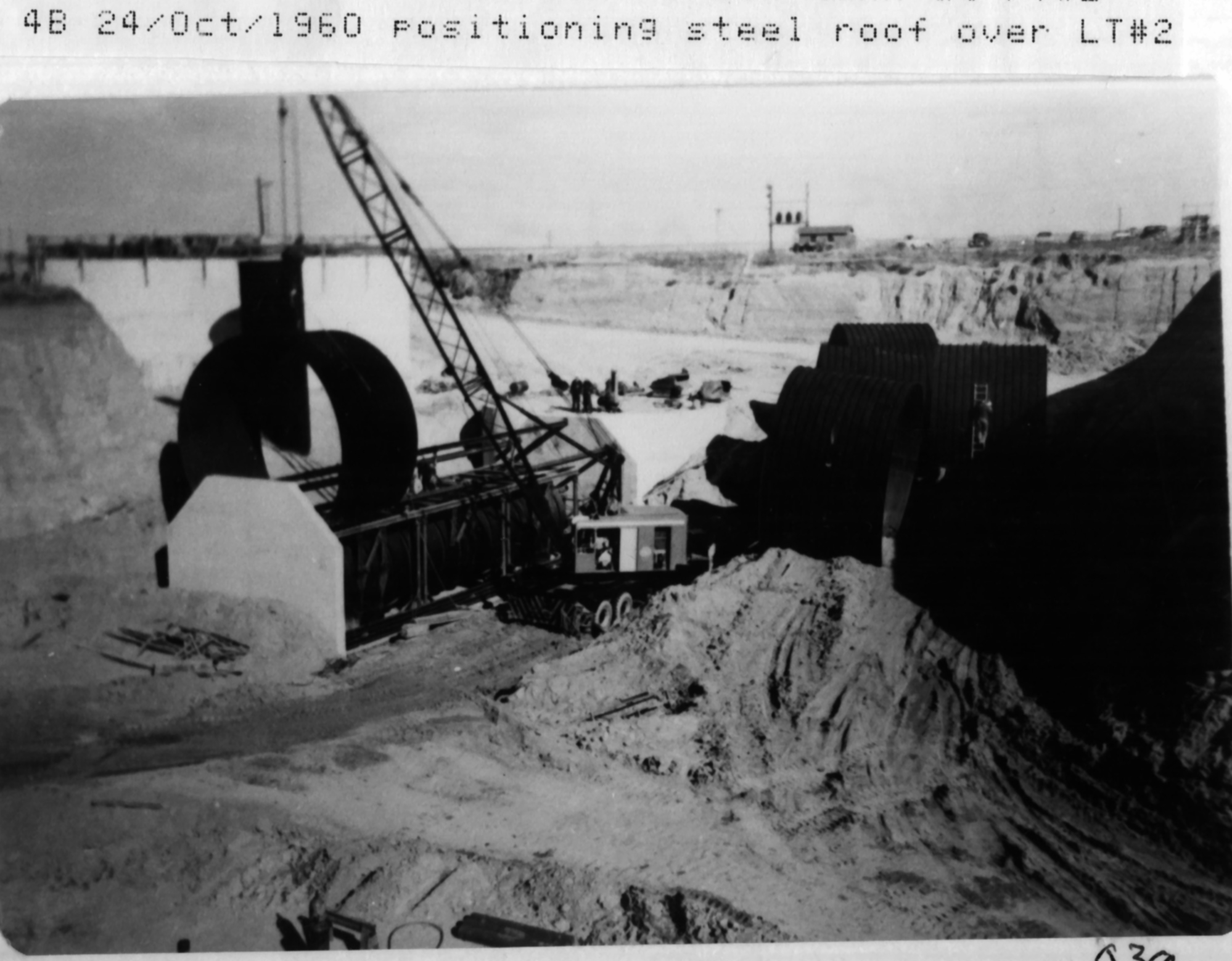
Enclosing
liner sections being installed around emplaced LOX tank
Photo
courtesy of Fred Epler
|
After
the closure of the Titan sites, all of the LOX bays at Lowry, and most
likely all other sites, were excavated and the tanks were removed and
re-purposed to other projects or placed in storage. The doors
into the complex were welded shut with heavy plate steel and the LOX
bays, hastily torn open, were just as quickly backfilled with earth.
Today
you can see the large depressions in the ground at 724-C where the
dirt has settled leaving a shallow rut near each LOX loading and vent
shaft. Some of the corrugated liner plates can also be seen
sticking from the ground, mostly buried, heavily rusted with peeling
pale yellow paint.
Normally
I would include photos of how the LOX bays appear today, but there
remains nothing to take pictures of, everything having been
buried. Additionally I could not locate any operational photos
of the completed LOX bays to show how they looked after completion. If anyone has any photos of these structures taken
from inside an operational complex I'd be very grateful if you would contact
me. I'm always curious to
see areas I've never glimpsed in person or in pictures.
So
ends the LOX bays section. Please click on the map below to
explore other areas or to go to the main map to see the entire
complex:
Current
Location: LOX Bays
|
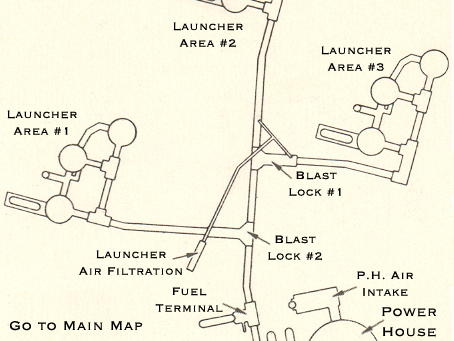
Where
would you like to go next?
|

|
Contact
| Site Map | Links |
Hosted by
InfoBunker

|

